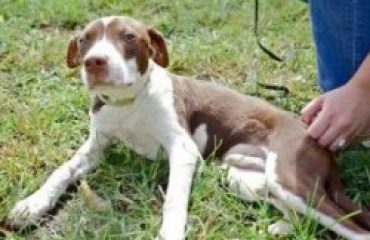
Photo by Lahorstman Photography
Shannon Peters is a U.S. Dressage Federation bronze, silver and gold medalist, and three-time National Championship competitor. She loves bringing young horses up through the levels, and competes regularly both in Southern California CDIs and other top shows. Shannon is married to Olympic dressage rider Steffen Peters, and together they operate Arroyo Del Mar in San Diego, California. Do you have a question you want Shannon to answer? Send questions to editor@sidelinesnews.com.
How do you first start teaching riders to sit the trot?
I like to start most riders on the lunge, as long as we have a confident, steady lunge horse. There’s no better way to learn balance, elasticity and gain core strength than doing lunge work. Making sure the horse is in a comfortable frame for lunge work, so that the horse is in a nicely forward and soft frame, helps the rider to find the correct balance. Always be sure to have a strap on the front of the saddle. I generally have the rider hang on to the strap with at least one hand, especially if they’re new to lunge work.
What advice do you give students who struggle with nerves before a competition?
Find a positive focus. Asking a rider what they do well in the arena will usually make them smile and softens their focus. We often dwell on the negative, on what we or our horses struggle with in competition, and I find sometimes that’s the thing which makes people nervous. I often ask my riders to focus on one thing that they want to make better in the arena, and strive to accomplish it in that test, and keep building on positive experiences to build confidence.
Do you take your horses on trail rides?
Yes! All of my horses go out on Wednesdays on a five-mile loop. There’s a lot of variety in terrain and footing, so the horses learn to balance on different surfaces. Training them on varied terrain also has such a positive benefit to bone and soft tissue. But most importantly for me is that it keeps them fresh and keen for their work.
How would you recommend redeveloping proper muscles in a horse that’s been out of work?
All of the horses in my program do a lot of cross training, so when a horse is brought back into work, generally they’ll start up again in a varied program that keeps them both mentally interested and physically challenged. Depending on why they may have been out of work, their program would include any appropriate combination of ground work, in-hand work, long lining, cavaletti, hill work and dressage gymnastics. We also are fortunate here to have a HorseGym and a Vitafloor, which are super useful for layups and for general conditioning. Adjusting a horse’s program to their particular needs is vitally important to developing the correct musculature and strength to carry a rider with ease.
What particular dressage principles would you recommend for a hunter or jumper rider to improve all-around riding?
Basics! Remembering the training scale in your daily work, no matter what your discipline, is so important: rhythm, suppleness, contact, impulsion, straightness, collection! The first three especially are so important for every horse, no matter what the level, or what discipline. Finding each individual horse’s natural rhythm and creating suppleness through the horse’s body creates the proper contact. Everything starts from there.













